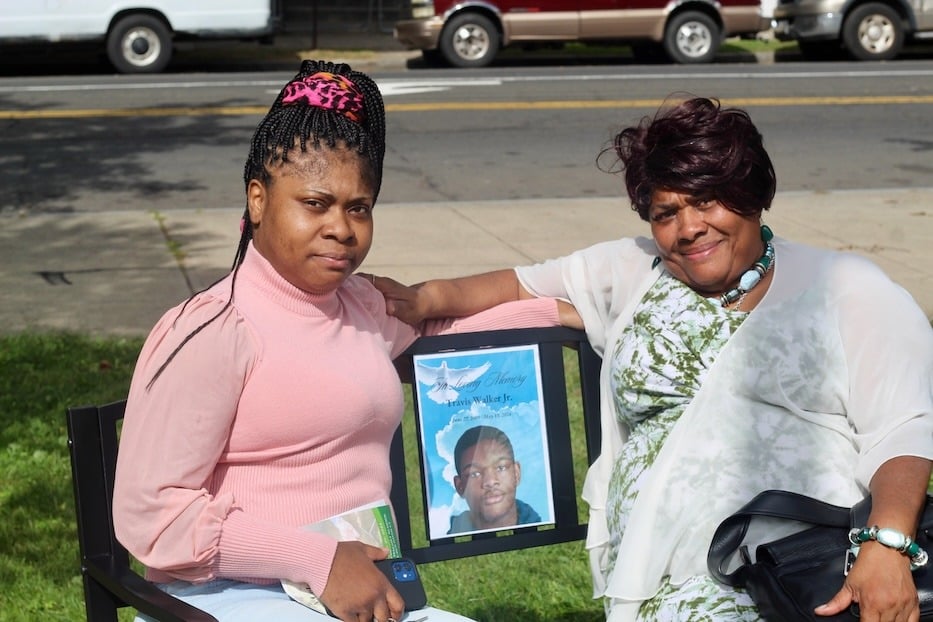
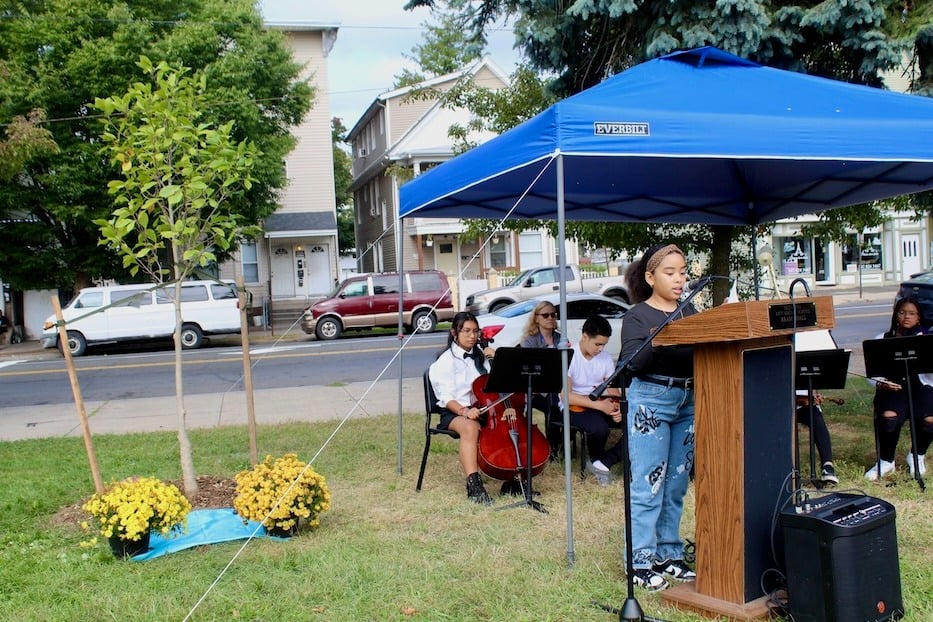
Top: Equalla Gray and Deborah Salters. Bottom: The tree, prior to the unveiling, with introductory remarks from students. Tavares Bussey's poem "Peace In My Soul" also opened the event. Lucy Gellman Photos.
Travis Walker, Jr. had a wide, bright smile and a penchant for bear hugs. He was a deep thinker, who loved writing haikus and making artwork as much as wrestling. A junior usher at church, he was so kind and gentle that even adults looked up to him—as did his little brother, Ahmad. As a student at Betsy Ross Arts Magnet School (BRAMS), he excelled in his classes, with a flair for visual art that his teachers often made note of.
When he died at 14 years old in May, it sent shockwaves through his family, his church, and his school communities. Now, it has inspired a reminder for all New Haveners: that peace starts within oneself.
Walker’s family, school community, city officials and members of the New Haven Peace Commission honored that memory Friday morning, in a peace tree planting and bench dedication beside BRAMS’ Kimberly Avenue parking lot. Held to commemorate the 43rd annual International Day of Peace, the dedication became a passionate call to practice peace from the ground up, from one’s own embattled heart to devastation halfway around the world.
The United Nations General Assembly first designated Sept. 21 as the International Day of Peace in 1981. For several years, the New Haven Peace Commission has commemorated the date with a tree planting at a different city school. It is a collaboration with members of the Urban Resources Initiative (URI) and New Haven Public Schools.
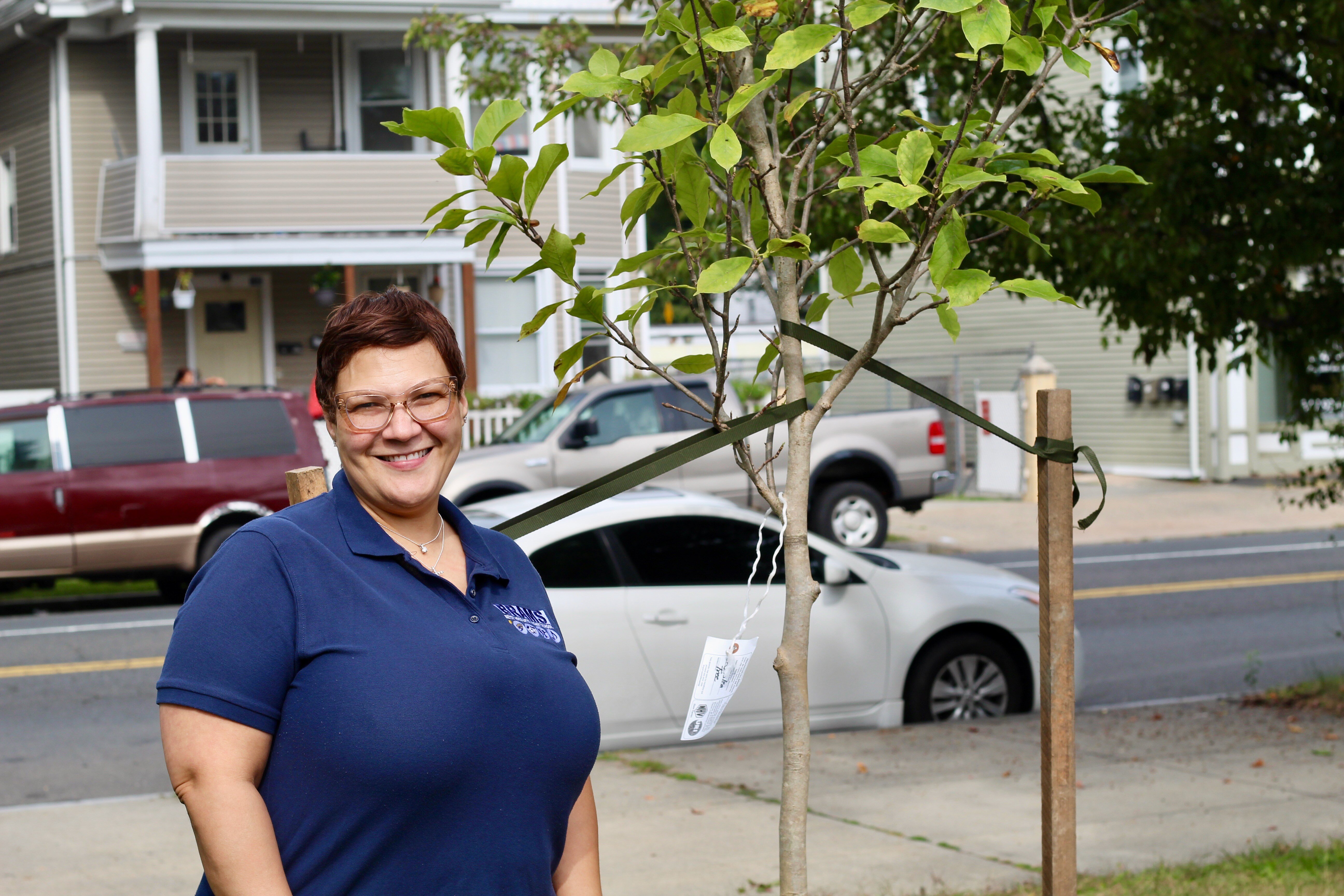
Jenkins on Wednesday, a day after URI put the tree in.
“Peace begins within each and every one of us,” said BRAMS Principal Jennifer Jenkins. “A lot of times we don’t realize that conflicts, and things that become violent, end up occurring because we as individuals don’t know how to find our peace without getting into a conflict or becoming violent with others. So today is about reflecting on, ‘How can we find peace within ourselves in those times when we’re struggling?’”
Friday, that message became a powerful reminder of not just the possibility and miracle of peace, but also the devastation that violence—including and especially gun violence—leaves in its wake. In the past eight months, New Haven has seen 60 people shot and injured by gun violence, according to the city’s CompStat reports. There have been nine homicides so far this year, senseless deaths that took people from the world much too early.
Those deaths include Walker, who died from a gunshot wound just a month short of his eighth grade graduation. A gifted visual artist and young poet, Walker was also an aspiring wrestler, doting big brother and active member of his church community, remembered his grandmother, Deborah Salters. At Union Temple Baptist Church, he was a junior usher with a big smile ready for whoever walked through the door.

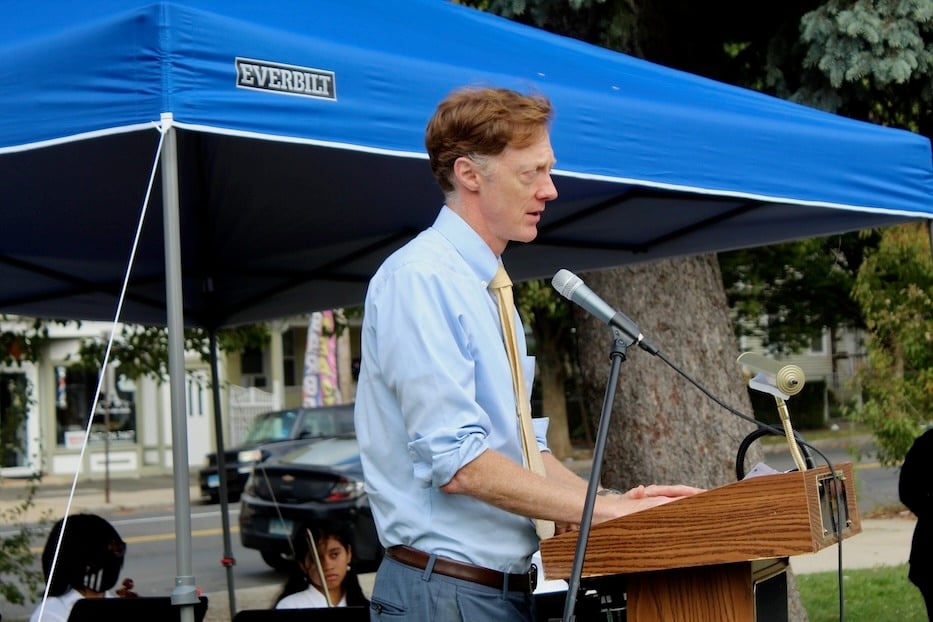
Mayor Justin Elicker: "Peace also means the end of gun violence, the ability of people to live each day feeling safe."
What he sometimes struggled to find, though, was inner peace. Walker, like an increasing number of teenagers across the country, was fighting mental health issues when he passed away. Both Salters and his aunt, Equalla Gray, said they wish he would have practiced the same grace and love for himself that he extended to others.
“I think that oftentimes, when we talk about International Day of Peace, we think about global conflicts,” said Mayor Justin Elicker, who had just hours before been with the family of Jebrell Conley, who police shot and killed in West Haven Thursday night. “But peace also means the end of gun violence, the ability of people to live each day feeling safe. Feeling safe within their own homes from domestic violence, feeling safe in their neighborhoods, feeling safe in our own schools.”
Like members of the Peace Commission, who have focused their work on war and violence both at home and abroad, he also acknowledged that New Haven exists in and is navigating a world upturned by political and economic unrest. In the midst of trying to find peace at home, there is ongoing devastation across the globe, from Gaza and the West Bank to Sudan to Ukraine.
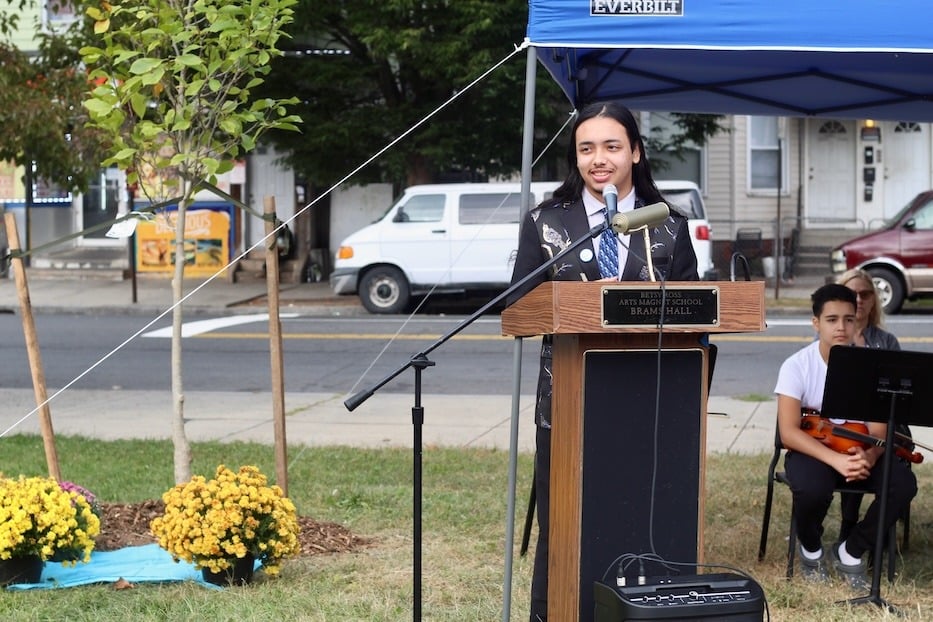
Camacho: Light in the darkness.
The trees, of which there are now hundreds across the city, respond to the weight and grief of all of it with new life. “Today’s symbol is about the City of New Haven’s commitment to ensure long-term peace in our community,” he said.
“In a world of darkness, chaos, and uncertainty, let us be the shining light of hope, peace and reassurance,” added Ice The Beef’s Manuel Camacho, a member of the Peace Commission and a sophomore at Southern Connecticut State University (SCSU). He paused to remember the four victims—two 14-year-old teenagers, and two high school teachers—who were shot and killed at Apalachee High School earlier this month. “Let us be those shining lights for all those around us who find themselves lost.”
At moments, it was music that carried that hope for inner peace out to the audience. Just behind a podium where speakers stood, Lisa Woodard’s strings students lifted their instruments and the first tinny strains of Soon Hee Newbold’s “Appalachian Hymn” filled the air, and the audience leaned in to listen. At one end of the ensemble, cello pulled away from the melody, blooming into a harmony that kept coming.
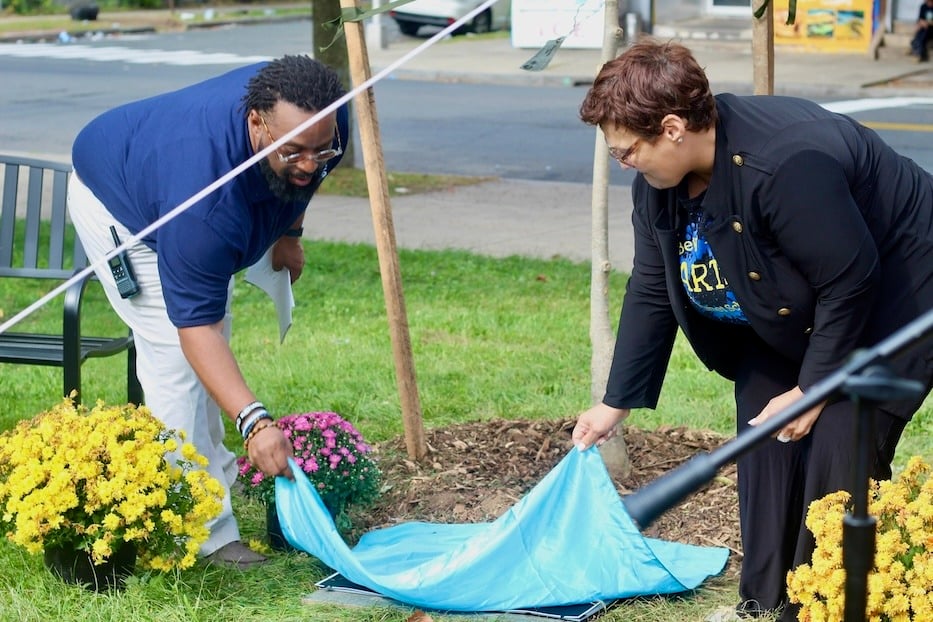
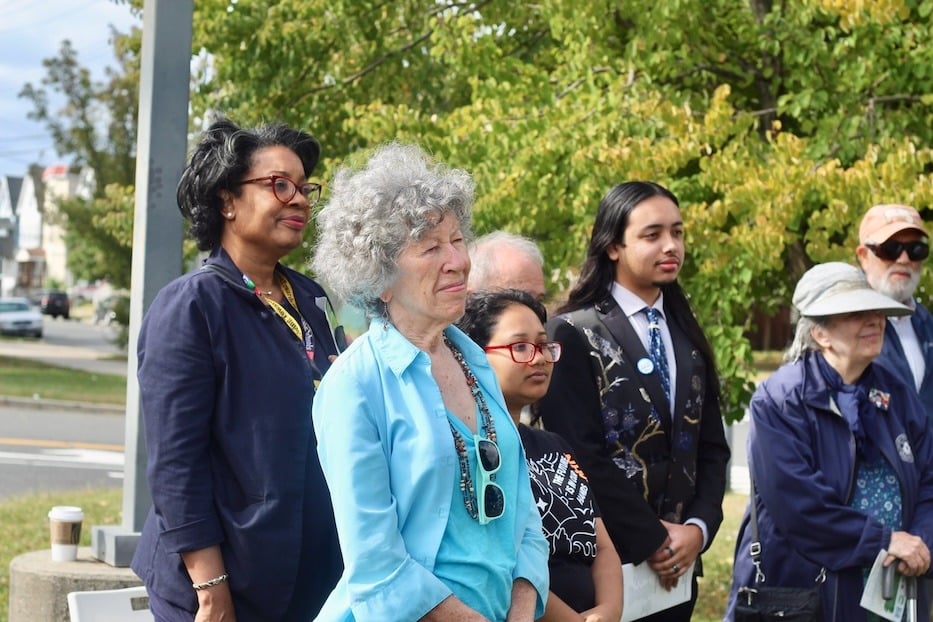
A warm wind blew through the parking lot, and the magnolia sapling seemed to wave its leaves in response, as if it was dancing along. Beside it, Walker’s portrait caught in the sunlight, gleaming atop a bench that had appeared in his honor. Beneath the tent, students continued to play without missing a beat.
As he watched from the audience, seventh grader Julian Durio let the sound surround him. Minutes later, he would be on the same makeshift stage, performing “We Are The World” with teacher Meaghan Sheehan and classmates from across the school’s grade levels. A transplant from New York City, he said he was excited—and moved—to be singing for peace.
“It inspires me to be my best self,” he said. Of Walker, he added that “I think it feels really sweet that we can honor his life.”
Back on the mic, that sense of reverence was well underway. Trying not to cry, Jenkins asked members of Walker’s family and of the Peace Commission to join her beside the tree, a magnolia sapling from which a fresh tag still hangs. Leaning down with Arts Coordinator Tavares Bussey, she unveiled a fresh plaque, a “living memorial to those who have lost their lives to violence.” She beamed as she read the words.
As she looked on, Salters mourned her grandson’s absence, often holding back tears as attendees came in close to inspect the tree and take their inaugural sit on the bench. In the months since his passing, she said, she and Gray have encouraged people to reach out and ask for help if they are struggling.
What she holds on to, she added, are the memories of what and how and who her grandson loved, from wrestling at the Floyd Little Athletic Center to Sundays in church. She credited a network of support, from Clifford Beers Community Care Center to Project Longevity to R Kids Inc for checking in on her and members of the family as they grieve—and advocate for peace, inside and out.
“It's an exceptionally, honorably blessed day,” Salters said. “And it's heart wrenching at the same time. He was feisty and he was so loving at the same time. He loved people. I wish he would have loved himself more.”